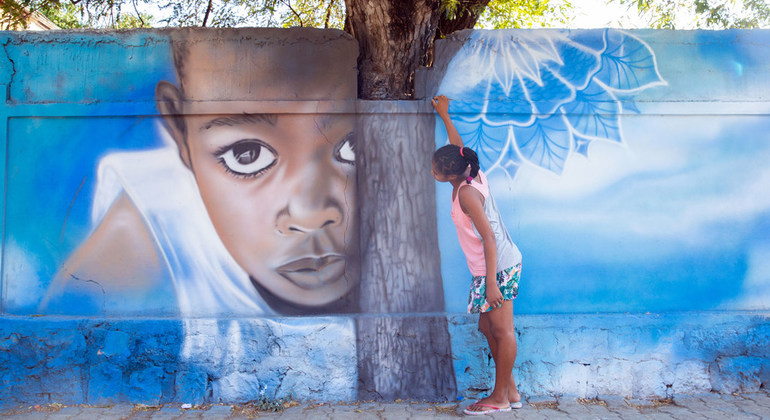Torrential rains two weeks ago affected 120,000 people, cutting off roads, destroying 174 schools and forcibly displacing 16,000, the UN Children’s Fund (UNICEF) reported.
Meanwhile, the World Food Programme (WFP) warned that the current lean season has left more than 700,000 people without enough to eat.
And although it is helping to feed some 230,000 hungry people, the UN agency spelled out that 11.4 million in the country are undernourished.
UNICEF Madagascar Deputy Representative, Jean Benoit Manhes, pointed out that the recent floods are just one of the many challenges faced by Madagascar’s children “all year long”.
These include natural disasters, drought, and pandemics – challenges that have been aggravated by climate change and require far more international attention and support.
“Because of poor access to sanitation, 40 per cent of the population still practice open defecation”, Mr. Manhes explained. “As a consequence, 93 per cent – I repeat, 93 per cent – of drinking water in rural areas is contaminated by e-coli”.
This, coupled with widespread poverty and a generally poor diet, leads to “one of the highest chronic malnutrition rates in the world; 42 per cent of children being stunted or as we say, chronically malnourished”, he elaborated.
Grim statistics
In an appeal for long-term assistance to Madagascar, UNICEF highlighted that two in five girls get married before they are 18, and more than one child in three, works in dangerous conditions, such as in the mica mining industry.
The agency also warned that fewer than one-in-three children has received the vaccines they need, leading to “annual pandemics” of polio and plague.
New epidemics – such as the measles outbreak this year which killed more than 1,200 children – could further destabilize the system, the agency said.
And to make matters worse, Madagascar remains among the poorest countries in the world, with 75 per cent of the population living on less than $1.90 a day.
In addition to facing malnutrition and life-threatening sanitation challenges, about five million out of a total population of 25 million people, live in natural disaster-prone areas.
Threatening shortfall
Every year since the 1990s, WFP’s School Feeding Programme has been serving an average of 275,000 children in more than 1,000 public primary schools in the most vulnerable areas – ensuring locally-produced, nutritious warm meals to keep children in school.
And last week it began two months of food and cash distributions to assist in livelihood rehabilitation and environment protection during the height of the lean season.
However, despite the many generous contributions received from donors, WFP faces a $42 million shortfall this year and needs additional funds to assist vulnerable and food insecure communities.
“Don’t forget Madagascar’s children”, Mr. Manhes, urged, concluding: “They need help and will need help for a long time”.




